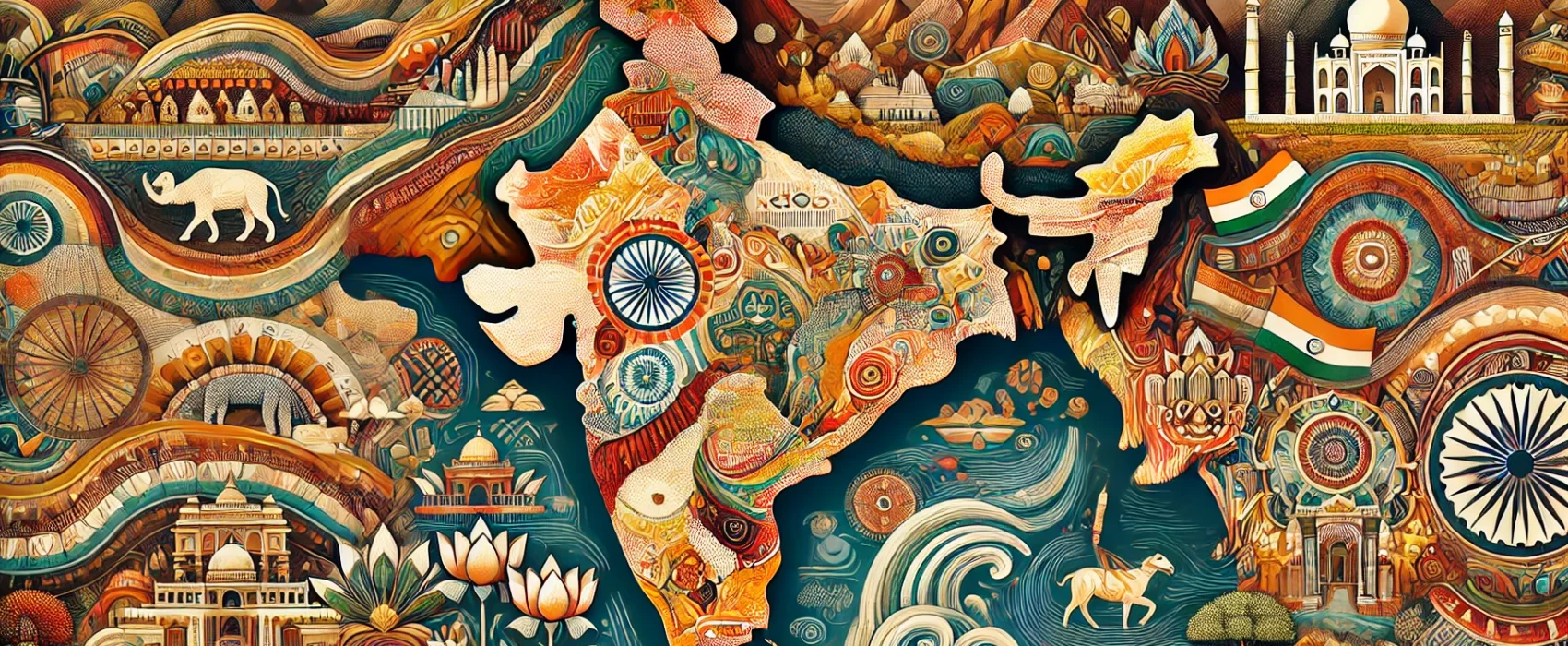Understanding India’s Linguistic Diversity
India, often heralded as a subcontinent, is a melting pot of cultures and, by extension, languages. The linguistic diversity of India is as broad and complex as its cultural and historical tapestry. Let’s delve deeper into the linguistic landscape of India, and explore not just the number of languages, but also the cultural, historical, and social dynamics that shape this diversity.
India does not have a national language, but Hindi, written in the Devanagari script, is the primary language in India for government purposes, with English also used for official and administrative functions. The Constitution of India recognizes 22 official languages, which includes the major languages of India such as Bengali, Marathi, Tamil, Urdu, Punjabi, and Gujarati. These languages highlight the rich linguistic fabric that makes up the nation’s identity.
All Languages in India
India has how many languages? Beyond the 22 scheduled languages, India is home to a myriad of dialects and regional languages, making it one of the most linguistically diverse countries in the world. The 2011 census identified 121 major languages and 19,569 dialects spoken across the country. This diversity raises a pertinent question:
Why are there so many languages in India? The answer lies in India’s vast and varied historical migrations and the isolation of tribal and rural communities, which have preserved distinct linguistic traditions over millennia.
Regional Language Distribution
From the language used in India in the northern plains to the southern coasts, each region presents a unique linguistic ecosystem:
- Northern India: Dominated by Hindi, this region includes states like Uttar Pradesh, Bihar, and Madhya Pradesh. The Hindi Belt has been historically influenced by Persian-speaking invaders, which has shaped the modern Hindi language.
- Southern India: Features a predominance of Dravidian languages like Tamil in Tamil Nadu, Kannada in Karnataka, Telugu in Andhra Pradesh and Telangana, and Malayalam in Kerala. These languages, with their ancient roots, are integral to the cultural identities of their respective states.
- Eastern India: Bengali is the dominant language in West Bengal and Tripura, renowned for its rich literary heritage. Odia is prevalent in Odisha, reflecting a distinct linguistic identity.
- Western India: Marathi and Gujarati are the main languages in Maharashtra and Gujarat respectively, each with significant cultural and historical significance.
The Role of Lesser-Known Languages
In addition to the well-documented major languages, India is home to several lesser-known languages and dialects, each with its own unique cultural and historical background. These include languages like Konkani, Bodo, Santhali, and Maithili, each spoken by smaller communities but playing crucial roles in the cultural mosaic of India. The preservation of these languages is vital for maintaining cultural diversity and historical continuity.
VEQTA Translations: A Leading Indian Translation Company
As a premier Indian translation company, VEQTA Translations offers comprehensive linguistic solutions that cover all languages in India, including the lesser-known Indian dialects. Our services include localization, subtitling, and interpretation across major and minor Indian languages. We understand the cultural nuances of each region, ensuring that every translation is not only accurate but culturally resonant.
The Business and Cultural Importance of Multilingual Communication in India
For businesses operating in or expanding to India, navigating this complex linguistic landscape is crucial. It affects everything from marketing strategies to customer relations and internal communication.
What language is spoken in India? The answer varies significantly across regions, which is why localized and nuanced communication strategies are essential for success. VEQTA Translations helps businesses navigate these challenges with expert services that ensure clear and effective communication.
How Many National Languages in India?
Although India recognizes 22 official languages, the country does not have a single national language. This multilingual framework underscores the cultural and linguistic diversity that defines India. For this reason, understanding what’s the language of India is more complex than it might appear at first glance. Each region has its own primary language in India, contributing to the rich tapestry of voices that define the nation.
The linguistic diversity of India is a testament to its rich historical, cultural, and social fabric. At VEQTA Translations, we are committed to facilitating clear and effective communication across how many different Indian languages there are, ensuring that your message is perfectly localized for its intended audience. Join us in breaking language barriers and building bridges in one of the world’s most linguistically diverse countries. (Berlitz)


